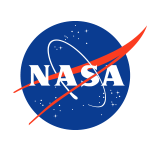Wavefront Sensing for a Segmented-Aperture Space Telescope Coronagraph
Project Description

Imaging terrestrial planets demands rigorous requirements on angular resolution and sensitivity. A large (> 8 meter) segmented aperture telescope can provide a solution but only if several other enabling technologies are implemented simultaneously, such as a starlight suppression system, capable of dealing with a segmented aperture. This proposal develops the wavefront sensing and control (WFSC) component of a starlight suppression system, supporting both the WFIRST and the Large-Aperture UVOIR Space Telescope (LUVOIR) architectures.
The objective of the proposal is to develop the software architecture for the wavefront sensor. We will develop the sensor in the context of controlling the dynamical disturbances of a segmented primary as configured in a coronagraphic instrument. The software and algorithms will be developed, performance simulations performed, and then tested using open-loop processing of Testbed data, for a demonstration of TRL 4 (laboratory verification). The goal is to develop a parallel implementation the Deformable Mirror (DM) update algorithms and then demonstrate high contrast in the lab, at an update rate that is traceable to on-orbit stability requirements. These results will then be converted into an FPGA design (Field Programmable Gate Array).
More »Anticipated Benefits
This proposal develops the wavefront sensing and control (WFSC) component of a starlight suppression system, supporting both the WFIRST and the Large-Aperture UVOIR Space Telescope (LUVOIR) architectures.
More »Project Library
Primary U.S. Work Locations and Key Partners
| Organizations Performing Work | Role | Type | Location |
|---|---|---|---|
 Goddard Space Flight Center
(GSFC)
Goddard Space Flight Center
(GSFC)
|
Lead Organization | NASA Center | Greenbelt, Maryland |
Primary U.S. Work Locations
-
Maryland


